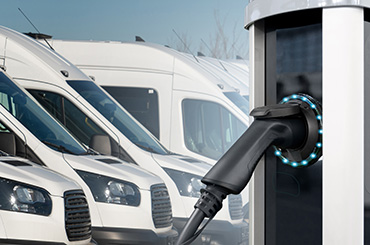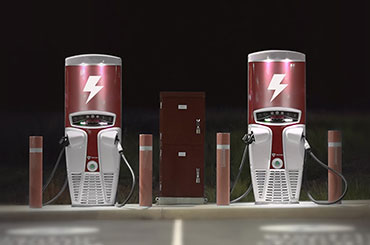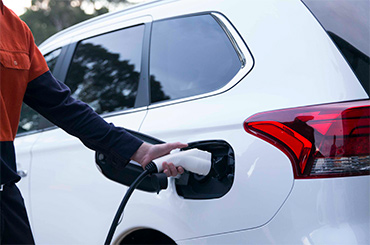
Charging an EV, specifically battery electric vehicles (BEVs) and plug-in hybrid electric vehicles (PHEVs), can be done via three different types of chargers (Level 1, 2 or 3).
The right charging method, and therefore the type of connection you will require, will depend on a few factors. How frequently and quickly you need to charge; the charging capacity of your BEV or PHEV; the number of EVs being charged at the location; and the range you require from each charge.
Fast and ultra-fast charging: Level 3
Recommended for:
- Charge point operators such as service stations
- ‘Destination’ charging at shopping centres; hotels, motels and resorts; caravan parks; tourist attractions etc with higher levels of charging demand
- Businesses with larger EV fleets
- Businesses with rapidly growing EV charging demands, such as vehicle dealerships
Level 3 chargers are referred to as ‘fast chargers’ and these range in power levels from 25kW to 350kW. Level 3 chargers delivering 100kW or more are referred to as ‘ultra-fast’ chargers and can fully charge a car in up to 30 minutes (depending of course on the size of the EV’s battery).
Level 3 chargers run on DC (Direct Current) rather than AC (Alternating Current), distinguishing them from Levels 1 and 2. They run on 3-phase power and therefore require a specific connection application.
Find out how to make your connection application.
Destination charging: Level 2
Recommended for:
- Households with more than one EV
- ‘Destination’ charging at shopping centres; hotels, motels and resorts; caravan parks; tourist attractions etc
- Businesses with small EV fleets not covering high daily distances
If you need to charge more quickly, cover higher-than-average daily distances, or have multiple vehicles requiring charging, then faster Level 2 charging may make the best choice for you.
Charging power for Level 2 can vary between 8kW up to 22kW, and therefore total charging time (from an empty battery) can be calculated by dividing your EV’s battery size by the charging power available.
This will require a switch to 3-phase power and must be done by a licensed electrical contractor. You will need to update your current connection offer with Essential Energy, and this is done by your electrician submitting a new connection application with the new load (amps) for the premises.
Find out how to make your connection application.
Home charging: Level 1
Suitable for:
- Households with an EV which does day-to-day commuting
- You do not need to submit a connection application for Level 1 charging
Level 1 or ‘trickle charging’ is the slowest method but will provide you with sufficient charge overnight for day-to-day commuting depending on the distances you travel. You can simply use a standard power point and connect your EV using a cable supplied with your car. As a general rule of thumb, divide your EV’s battery size by 2 in order to estimate the number of hours required to charge your vehicle fully via Level 1 charger.
Another option for home charging is to use a “smart charger”. While a regular charger is sufficient to charge the vehicle, a smart charger provides additional functionality which lets you monitor, manage and adjust your energy consumption when charging your EV. This means that you can choose the optimal and most cost-effective time to charge your EV.



